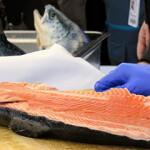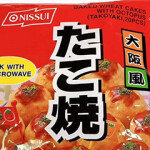Hatchery salmon help Alaska avert fishery disaster
Around mid-August this year, the fishing season in Southeast Alaska looked grim. Some areas had posted the lowest pink salmon landings since the 1970s, and the total pink catch would end up at just around 70 percent of the paltry 23 million fish forecast. For comparison, the 18 million pinks caught in 2016 prompted a disaster declaration from the federal government.
But at the end of August, something unexpected happen. Hatchery chum salmon from the National Southeast Regional Aquaculture Association (NSRAA) remote release site at Crawfish Inlet, 40 miles south of Sitka, returned in unprecedented numbers, providing a massive shot in the arm for the industry.
“The Crawfish Inlet fishery literally saved seasons,” Jeremy Woodrow, the communications director for the Alaska Seafood Marketing Institute, told SeafoodSource. “There were guys talking to their processors about renegotiating loans because they weren’t going to be able to make payments this winter, and after that opening they called back and said, ‘Never mind, we’re good.’”
On a single opener on 30 August, fishermen scooped up over 900,000 hatchery chums, a catch that added up to a USD 6 million (EUR 5.3 million) payout to fishermen, and USD 13 million (EUR 11.5 million) for the first wholesaler. A few more openers padded those numbers, and by the second week in September, processors and fishermen were basking in a significant windfall.
“The total ex-vessel value to fishermen was something on the order of USD 15 million [EUR 13.2 million], roughly, from the Crawfish Inlet program. And the first wholesale value of just that one program alone was about USD 30 million [26 million],” NSRAA General Manager Steve Reifenstuhl told SeafoodSource.
NSRAA has only released fish at Crawfish Inlet for two years, in 2014 and 2015. Reifenstuhl said while 2017 returns of three-year-olds from the 2014 brood year were good, they were not inordinate. This season, however, returns from both brood years came in at stunning volumes. The three-year-olds from the 2015 brood year returned in greatest numbers, adding up to around 2.7 million fish.
“Those fish alone represent over a 10 percent marine survival. I’ve never heard of it before and we’ve never seen anything quite like it in the history of NSRAA,” said Reifenstuhl, who has spent most of his 37-year career with NSRAA.
A more reasonable marine survival rate is around two to 2.5 percent, which is what the successful Deep Inlet hatchery has been holding at for a number of years.
Reifenstuhl chalks the high survival rates up to a couple of factors, most prominent among them being the new site of the hatchery. Over the years, predators like humpback whales, pollock and cod gather at release sites to feed on the injection of biomass, often lowering survival rates at older sites.
Reifenstuhl added that chum salmon’s diet may be more well-suited to warming ocean conditions. While chums prefer zooplankton, they have a broader diet than many other salmon species, and will eat jellyfish and salps when their preferred food source is not available.
“Compared to other salmon, they have a much more mixed and broad diet. If the highest protein and fat prey isn’t available, chums will switch to other things,” Reifenstuhl said.
Whatever the cause for the high survival, Woodrow said it shows how hatcheries help the industry power through periods of low wild runs.
“It’s a perfect example of how Alaska’s hatchery system has done a great job of balancing the swings we have naturally in the wild populations … It’s important to have these hatchery runs because it keeps fishermen stable and allows them to fish year-to-year, so when we do have large wild runs we have an industry to fish those runs,” Woodrow said.
But there are some people who argue that it is precisely the hatchery fish that are stunting the wild runs. Last week, the Alaska Board of Fisheries heard two proposals from sport-fishing advocates to reduce limits on hatchery releases.
Both the motions were rejected, but the board and the Alaska Department of Fish and Game (ADF&G) have pledged to keep analyzing the interplay between hatchery fish and wild runs.
“We’ve spent a lot of money trying to answer these questions. We have an ongoing research project with the private sector, NGOs and other researchers,” said Forrest Bowers, the acting director for the ADF&G’s division of commercial fisheries.
Bowers said the studies focus on straying hatchery fish and how they might affect wild populations as well as the effects of commingling.
“We know that hatcheries done wrong can have a negative impact. That’s sort of the story of hatcheries in the Pacific Northwest, and our program is structured in a way that we’re trying to minimize negative effects,” Bowers said.
Bowers pointed out that in the last 10 years, Alaska has seen the three largest salmon harvests on record, and all of them coincided with large wild stock returns.
Last year, total salmon landings in Alaska were around 222 million, and about 47 million of those were hatchery fish.
Photo courtesy of NSRAA






Share